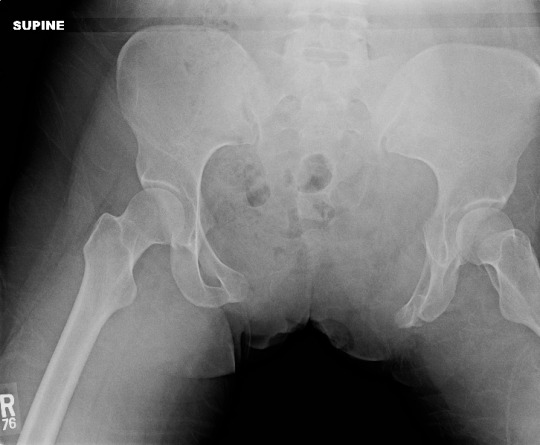Pelvic bony injury requires substantial force, and there are several distinct fracture patterns seen. Today, I’ll briefly review the so called A-P force mechanism and its grading.
The anterior-posterior (A-P) mechanism frequently results in what many call an “open book” pelvis on x-ray evaluation. It most commonly occurs when something heavy rolls over or crushes the pelvis. We see this in patients who have a vehicle roll over their torso, or are crushed by heavy machinery. The force is applied to the sacrum posteriorly and the anterior portions of the iliac crests. This fulcrum effect displaces one or both iliac wings posteriorly. The flexion point is typically the sacro-iliac joint or the sacral wings. The pubic symphysis pulls apart as the iliac wings move away from their anatomic position.

The usual grading system assigns a type subclassification based on the amount of disruption:
- Type I – less than 1 inch (2.5cm) of pubic diastasis, or rami are fractured; no significant posterior injury
- Type II – more than 1 inch of diastasis; one or both SI joints widened; posterior SI ligament intact; anterior SI, sacrospinous and sacrotuberous ligaments torn
- Type III – all anterior and posterior ligaments disrupted

How is this grading system useful? It is generally predictive of hemodynamic instability, resuscitation requirements, and the possibility of concomitant vascular and/or neurologic compromise. However, you can also get a pretty good idea of all of that just looking at the x-ray. But it is helpful in describing the injury to your orthopedic colleagues.
Tomorrow: What to do about it in your trauma bay.

